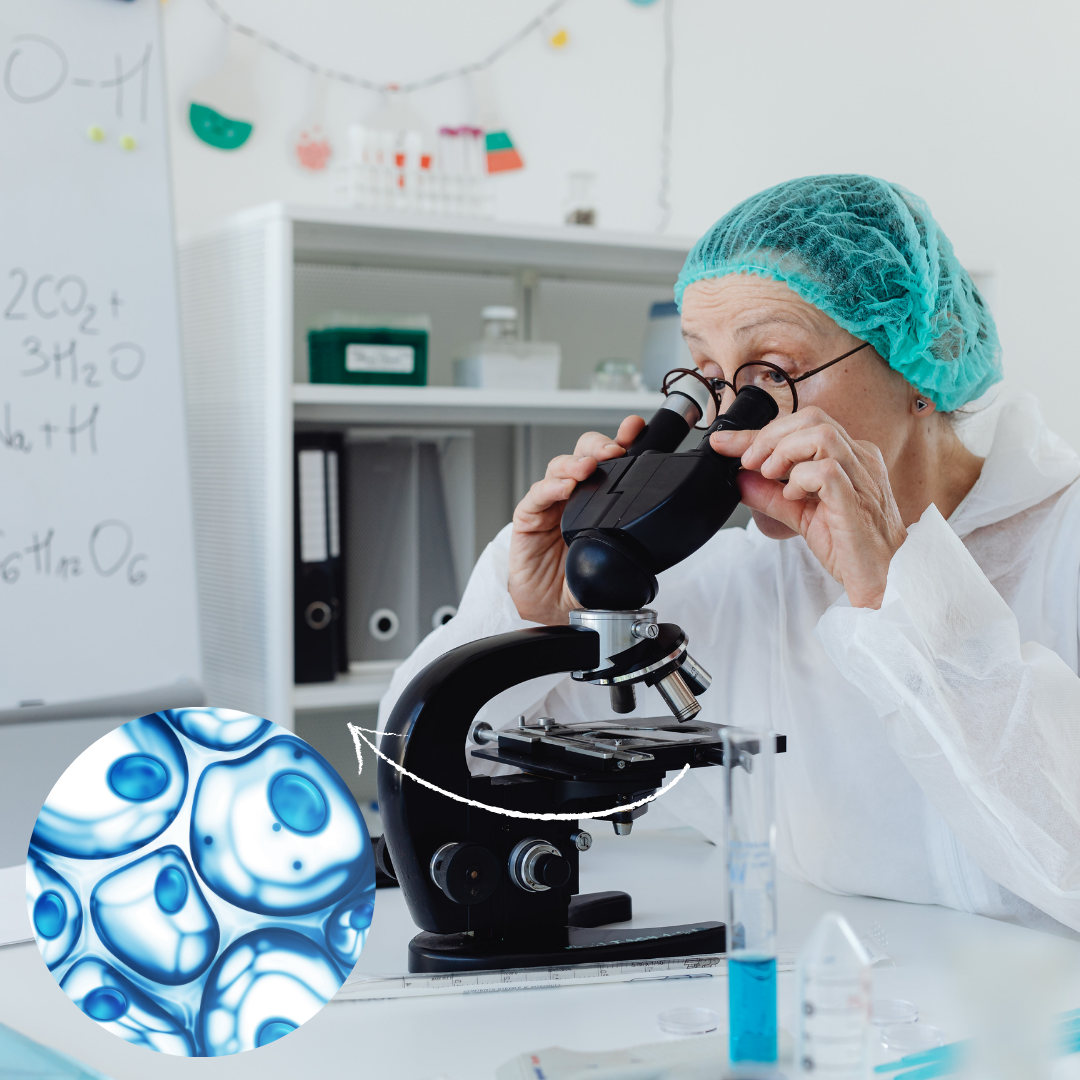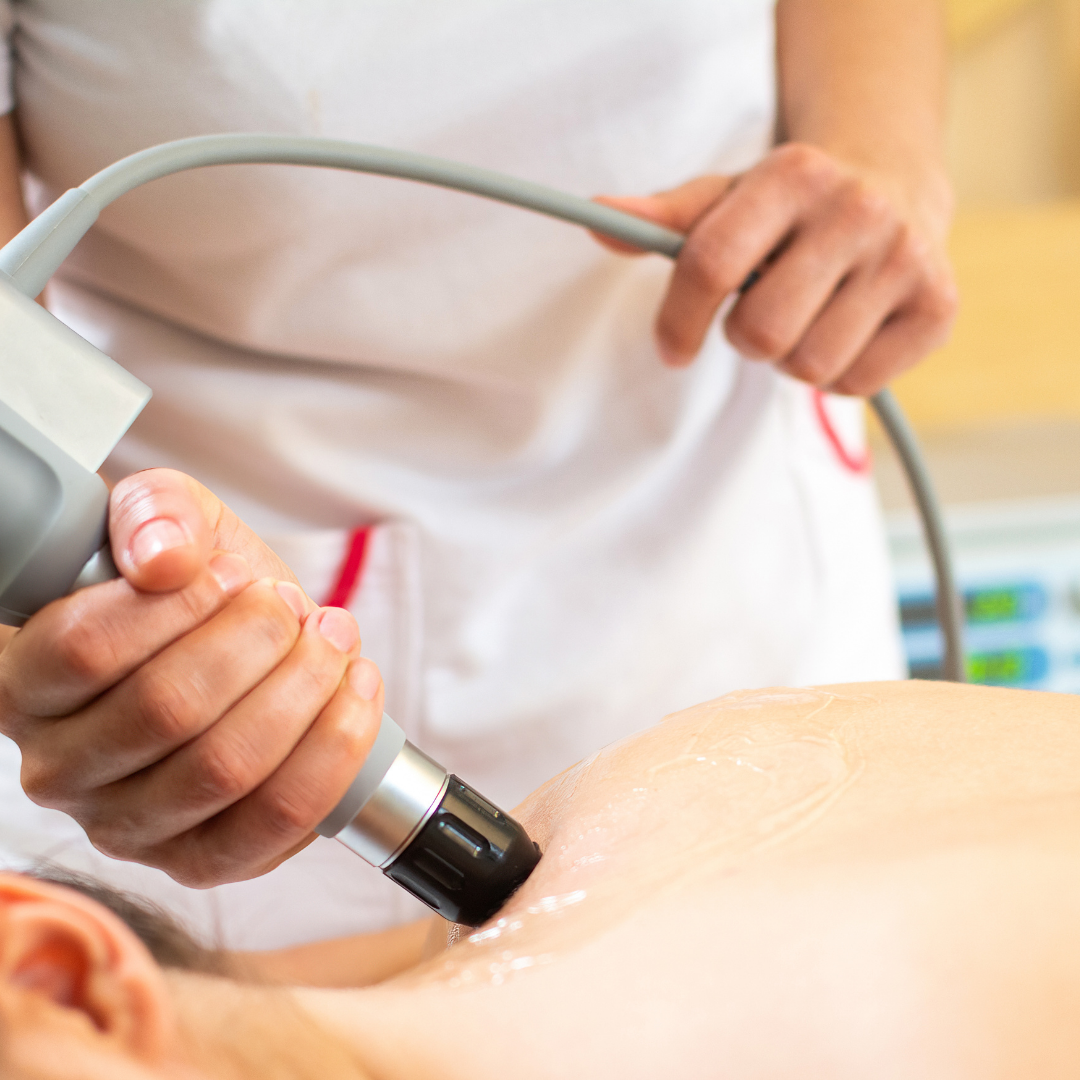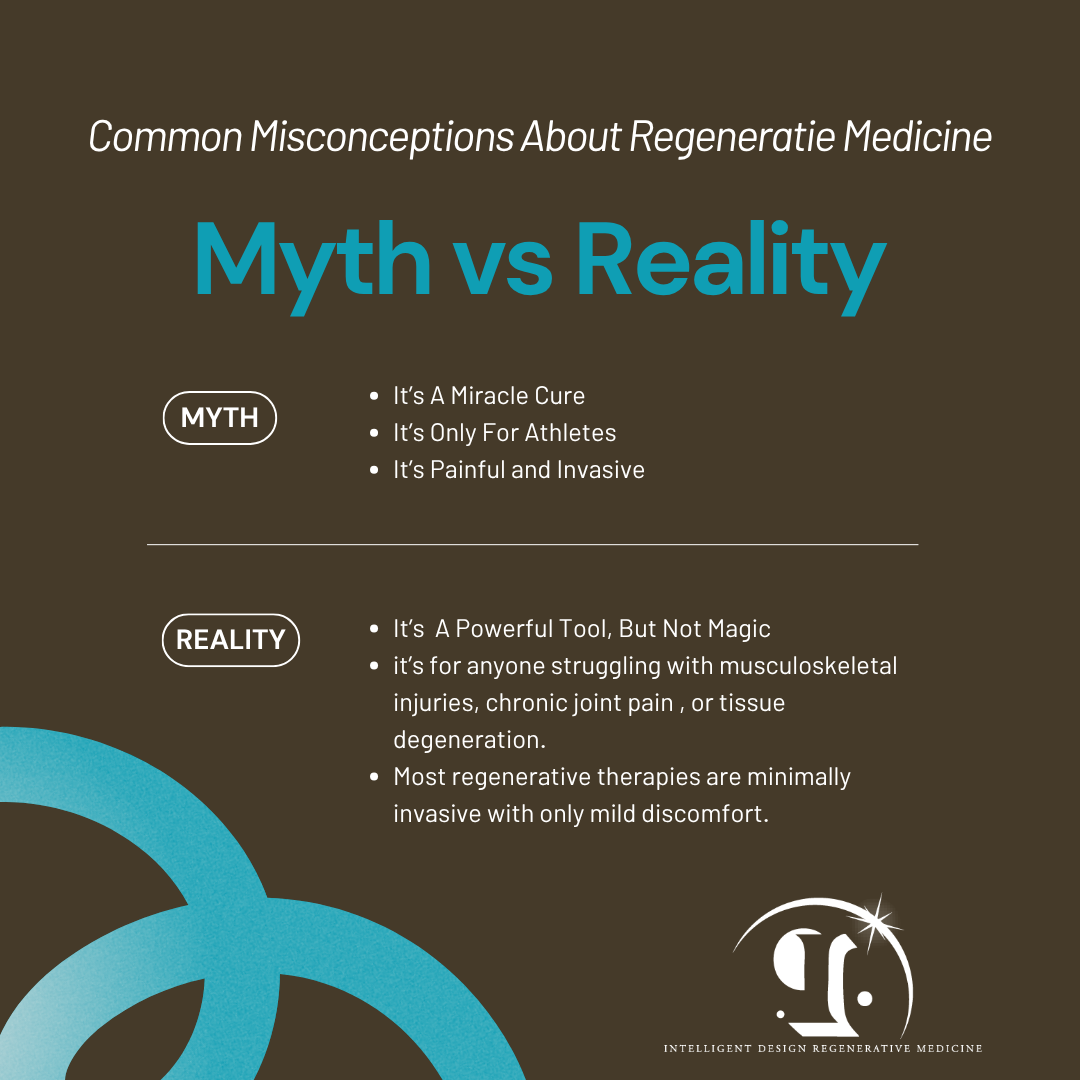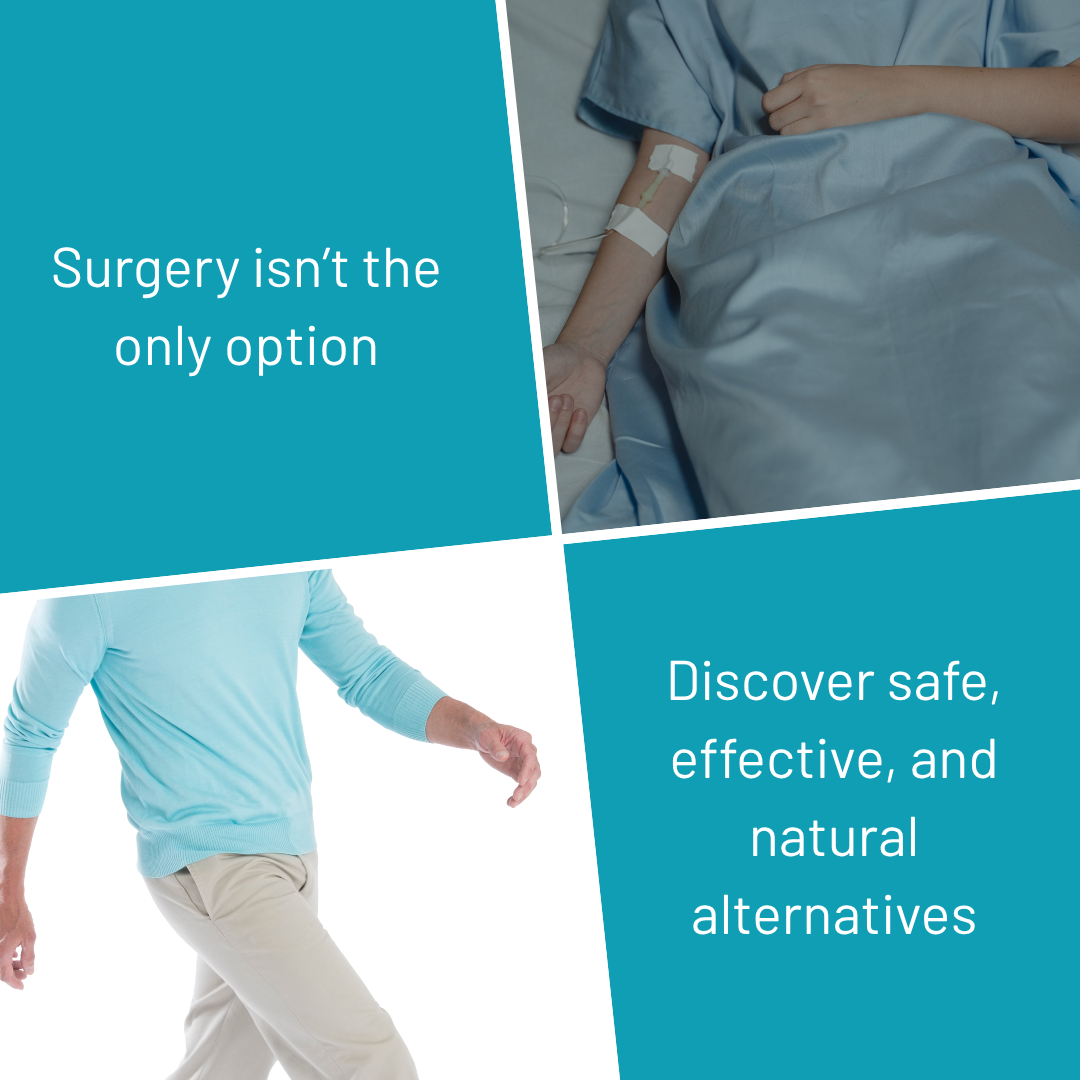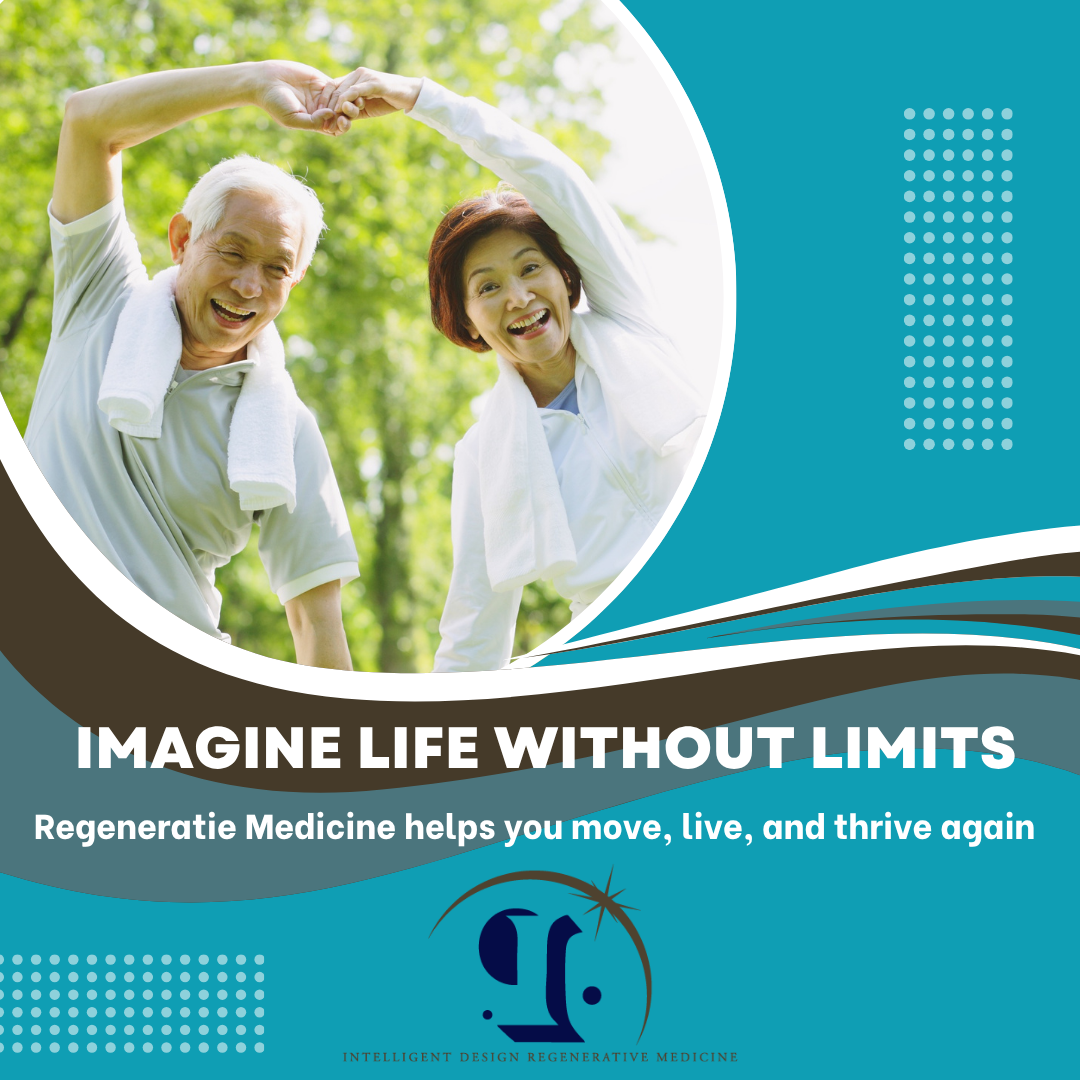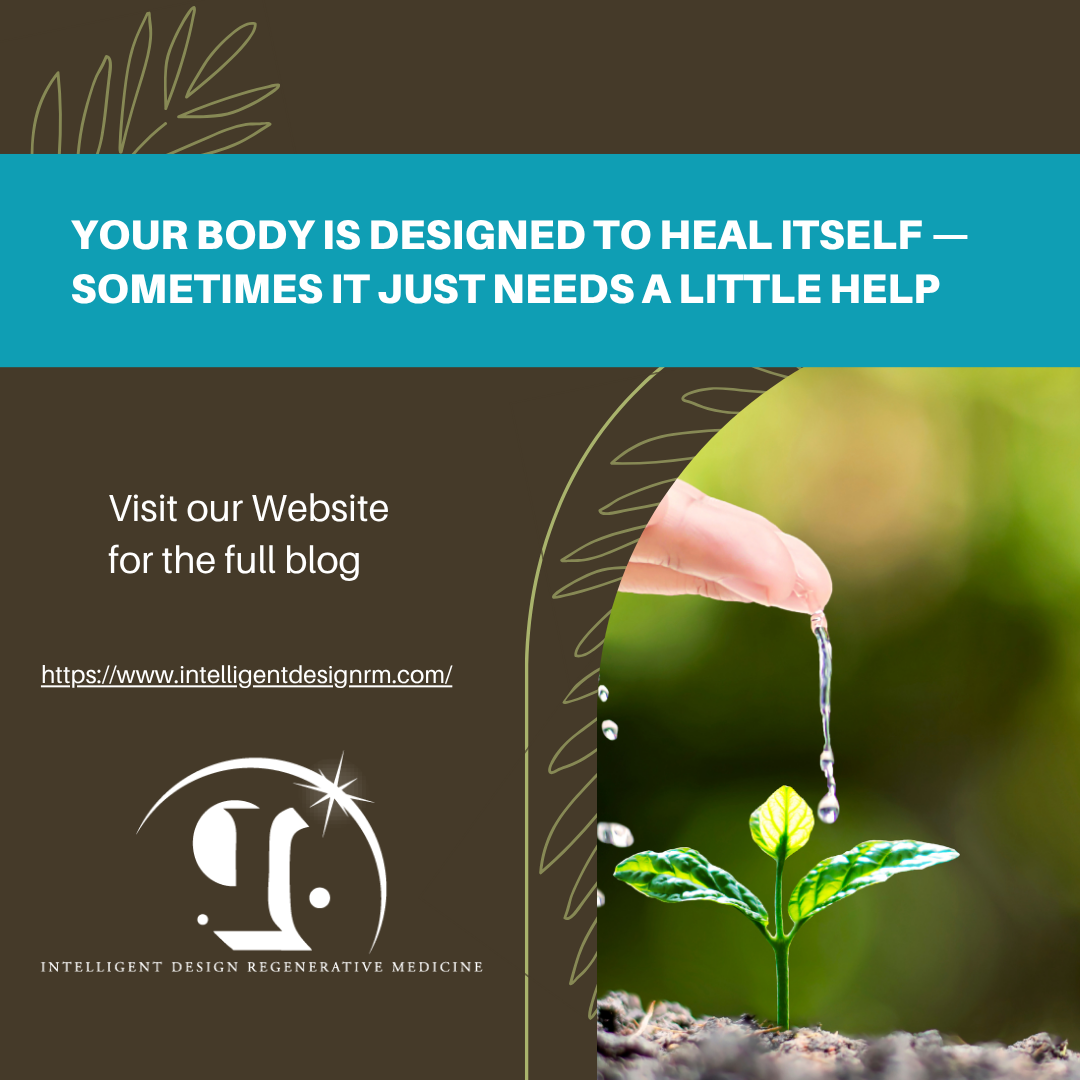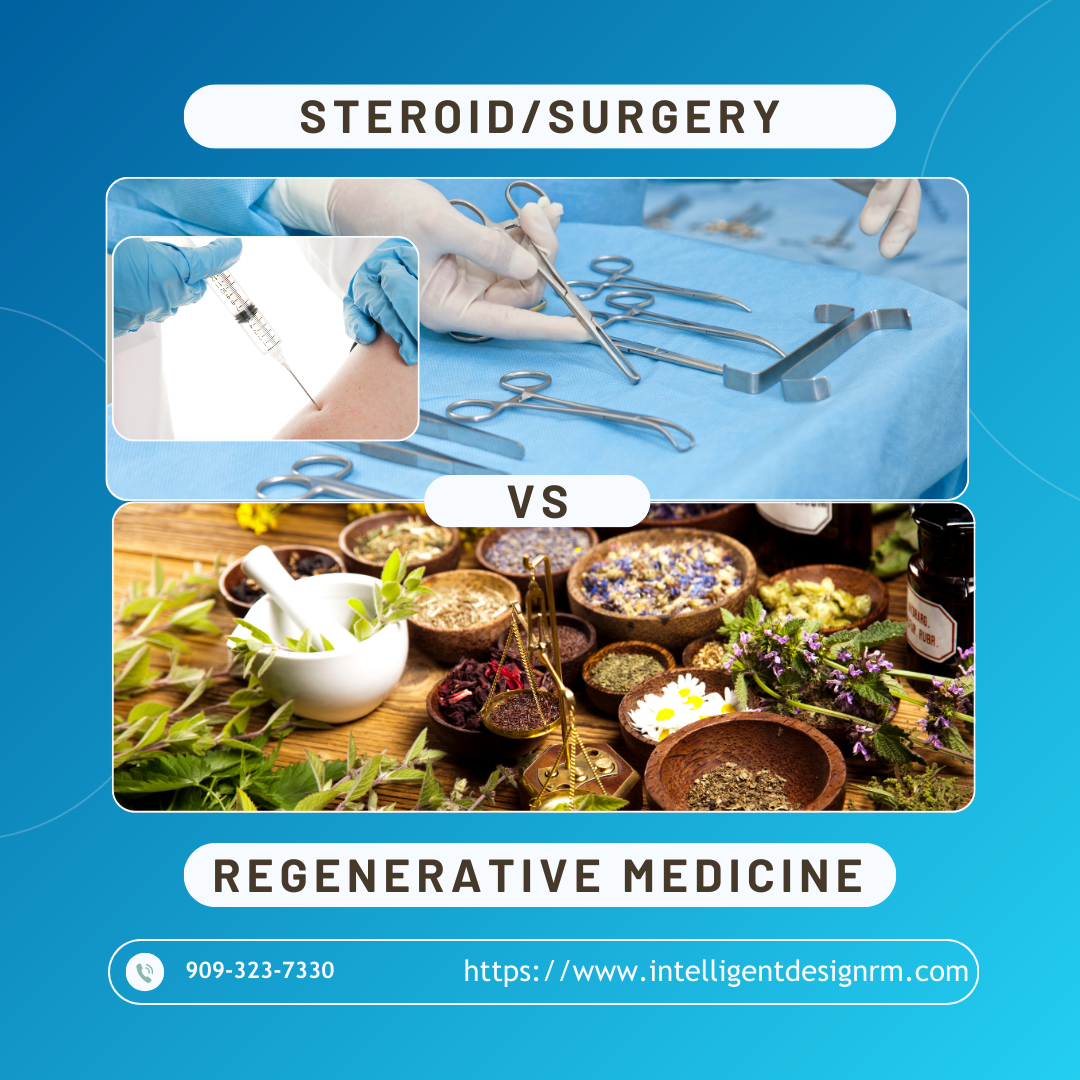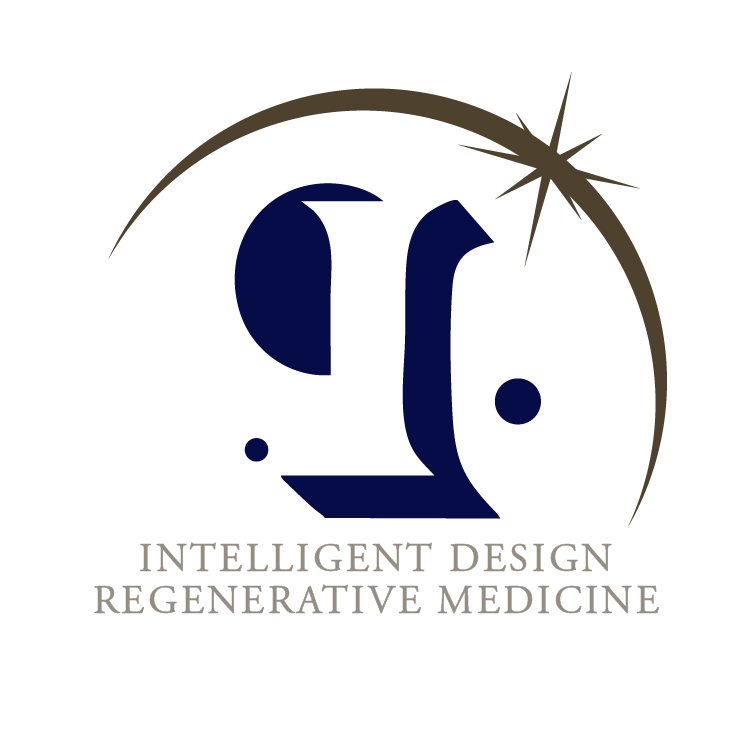Introduction: A Shift from Relief to Restoration
For decades, modern medicine has been centered around the idea of relief: relieving pain, relieving inflammation, relieving symptoms. While this approach can be valuable, it often leaves the underlying cause of dysfunction unresolved. Regenerative medicine is changing that story.
Instead of masking discomfort with medication or immobilizing joints with surgery, regenerative therapies work by activating your body’s own healing potential. The focus is not just to help you feel better temporarily—but to restore natural balance and function from within.
At Intelligent Design Regenerative Medicine (IDRM), we see the body as an intelligent, self-healing system. When given the right biological cues, it can repair tissue, reduce inflammation, and regenerate structures that were once thought irreparable. The future of medicine isn’t about control—it’s about collaboration with your body’s innate design.
Understanding the Body’s Natural Repair Process
Your body is constantly repairing itself. Every cut, bruise, or muscle strain sets off a complex cascade of events designed to restore order. This biological repair system operates 24/7—quietly, efficiently, and often unnoticed.
When injury occurs, cells in the damaged area release chemical “help signals” called cytokines and growth factors. These molecules summon platelets, stem cells, and immune cells to begin cleaning up damaged tissue and laying the groundwork for new growth.
In an ideal situation, this process unfolds perfectly: inflammation rises briefly to protect and clear debris, then subsides as tissue repair begins. Over time, healthy cells replace the injured ones, and normal function returns.
However, when injury is severe, repetitive, or chronic, this process can stall. The body might form scar tissue instead of healthy tissue, circulation may decline, and chronic inflammation can linger—blocking regeneration. That’s when pain becomes persistent and function starts to deteriorate.
Repair vs. Regeneration: What’s the Difference?
The difference between repair and regeneration might seem subtle, but it’s actually profound.
- Repair is the body’s short-term emergency response. It’s like patching a hole in a tire—it seals the problem, but the material is never quite the same. Scar tissue forms, mobility can be limited, and the area remains vulnerable to re-injury.
- Regeneration, on the other hand, is restoration. It means creating new, healthy tissue that matches the original in structure and function. True regeneration is nature’s gold standard—what we see when a child’s skin heals without scarring or when bone tissue fuses perfectly after a break.
Regenerative medicine aims to reactivate this regenerative capacity. It gives your body the biological boost it needs to finish the job it started but couldn’t complete on its own.
The Science Behind Regenerative Therapies
At IDRM, we use several evidence-based regenerative treatments that work with your body’s cellular intelligence, not against it.
Platelet-Rich Plasma (PRP) Therapy
PRP harnesses the healing power of your own blood. A small blood draw is spun in a centrifuge to separate out platelets and growth factors—the body’s natural “repair messengers.” When injected into an injured or inflamed area, these concentrated platelets stimulate new cell growth, collagen production, and tissue repair.
PRP is especially effective for tendon injuries, joint degeneration, and chronic inflammation that hasn’t responded to traditional care.
Peptide Therapy
Peptides are small chains of amino acids that act like communication signals in your body. Specific peptides can direct cells to regenerate tissue, regulate inflammation, improve metabolism, and even enhance immune function.
Because they mimic natural processes, peptide therapies are both safe and highly targeted—helping your body fine-tune its healing response.
SoftWave Therapy (Extracorporeal Acoustic Wave Therapy)
SoftWave uses gentle sound waves to stimulate cellular repair deep within tissues. These acoustic pulses increase blood flow, activate dormant stem cells, and reduce inflammation—without injections, surgery, or downtime.
Patients often report immediate improvement in mobility and pain levels after treatment.
Why Traditional Medicine Often Falls Short
Conventional medicine tends to focus on symptom control—painkillers, steroids, and surgical intervention. While these treatments can bring temporary relief, they rarely address the root cause of dysfunction.
Painkillers simply turn off the alarm; they don’t repair the damage.
Steroids suppress inflammation but can also suppress healing.
Surgery can fix mechanical issues but often creates trauma that still requires cellular repair.
In contrast, regenerative medicine focuses on restoring function and structure. It doesn’t override your biology—it enhances it. This means you’re not just managing pain; you’re creating the conditions for your body to rebuild itself naturally.
The Role of Inflammation: Friend or Foe?
Inflammation often gets a bad reputation, but it’s actually an essential part of the healing process. The problem arises when inflammation becomes chronic.
Short-term inflammation signals the immune system to begin cleanup and repair. Chronic inflammation, however, keeps the system “switched on,” leading to cellular damage and delayed healing.
Regenerative therapies help reset this cycle—encouraging acute, productive inflammation that triggers real regeneration while reducing the long-term inflammatory patterns that cause pain and stiffness.
Supporting Regeneration Through Lifestyle
Even the most advanced regenerative treatment works best when paired with supportive daily habits. At IDRM, we help patients optimize three key areas that directly impact healing:
- Nutrition: Anti-inflammatory foods like leafy greens, berries, fatty fish, olive oil, and turmeric support tissue repair and reduce oxidative stress.
- Sleep: Deep sleep is when most tissue regeneration occurs. Consistent, restorative rest is non-negotiable for optimal outcomes.
- Movement: Gentle, guided movement after treatment enhances circulation and helps new tissue integrate properly.
Healing isn’t passive—it’s participatory. Your body wants to heal; our goal is to help it do so more efficiently.
The Intelligent Design Approach: Personalized, Integrated Care
At IDRM, we don’t believe in one-size-fits-all treatments. Each person’s body, injury, and goals are unique. That’s why every patient begins with a detailed consultation that includes:
- A comprehensive medical history review
- Assessment of pain sources and mobility
- Functional testing or imaging as needed
- A collaborative goal-setting session
From there, we design a personalized regenerative protocol that may include PRP, peptides, SoftWave therapy, or a combination—supported by nutritional guidance, lifestyle recommendations, and follow-up care.
This integrated approach helps our patients move from pain management to function restoration.
Benefits Beyond Pain Relief
While most patients initially seek regenerative medicine for pain, they often discover benefits that extend far beyond it:
- Improved Mobility: As tissue heals and inflammation subsides, flexibility and movement often return naturally.
- Reduced Reliance on Medication: Many patients find they no longer need daily painkillers or anti-inflammatories.
- Enhanced Energy and Sleep: Less pain equals better rest and recovery.
- Stronger Joints and Muscles: Regeneration strengthens tissue integrity over time, reducing risk of future injury.
- Improved Quality of Life: Perhaps the most meaningful result—being able to move, work, and live freely again.
The Future of Healing Is Already Here
Regenerative medicine isn’t a vision of the future—it’s a reality that’s transforming healthcare today. What makes it remarkable is its simplicity: it doesn’t replace your biology; it empowers it.
Instead of fighting your body’s natural processes, regenerative medicine aligns with them—creating true, lasting healing from within. It’s not about quick fixes or shortcuts; it’s about long-term restoration and resilience.
When to Consider Regenerative Medicine
You may be a good candidate for regenerative care if:
- You’ve tried traditional therapies (pain meds, injections, or physical therapy) with limited success.
- You’re not ready or eligible for surgery.
- You want to heal naturally without dependency on medication.
- You’re proactive about maintaining long-term mobility and performance.
Our team at IDRM will evaluate your condition, discuss options, and guide you toward the best regenerative solutions for your unique goals.
Conclusion: Reclaim Your Healing Potential
Your body is more capable than you’ve been led to believe. With the right tools, support, and scientific guidance, it can regenerate tissue, restore function, and rebuild strength at any stage of life.
At Intelligent Design Regenerative Medicine, our mission is to help you unlock that potential. We combine advanced regenerative science with compassionate, personalized care—so you can move beyond pain relief and step into true restoration.
Ready to discover what your body can do?
Schedule a consultation today and let’s begin your journey toward natural healing and renewed vitality.


